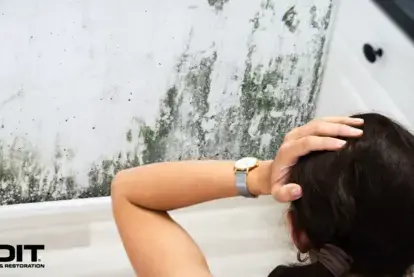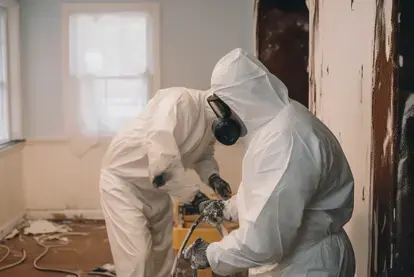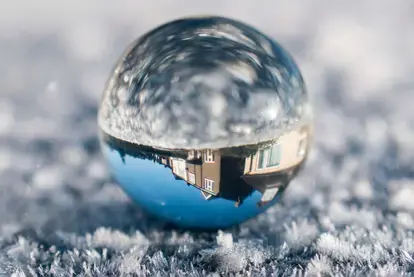
Pipe Burst? Here’s How to Restore the Damage and Prevent Mold
Contact COIT for a professional cleaning!
A burst pipe can turn your home upside down in minutes. Whether it happens during a cold snap or due to aging plumbing, water damage from a pipe burst is something no homeowner wants to deal with.
At COIT, we understand the urgency of burst pipes. That’s why we’re here to walk you through exactly what to do, what to expect, and how to get your home back to normal as quickly and safely as possible.
With over 75 years of experience, our technicians have seen it all and know exactly how to handle these emergencies. Learn more about COIT’s water damage restoration services.
What Causes a Pipe to Burst?
Pipes burst for a few main reasons:
- Freezing temperatures: When water freezes inside a pipe, it expands. This creates pressure and can cause the pipe to rupture.
- Corrosion: Older pipes, especially those made from steel or iron, can corrode over time and become weak.
- High water pressure: Excess pressure can strain the pipe walls, especially at joints.
- Clogs: A severe clog can create a backup of water pressure, forcing a pipe to break.
No matter the cause, once a pipe bursts, the clock is ticking. Water can quickly soak into flooring, walls, and furniture, and if it’s not cleaned up properly, it can lead to mold, rot, and major structural damage.
How to Tell If a Pipe Has Burst
Sometimes, a burst pipe is obvious. Other times, the signs are more subtle. Here’s what to look for:
- Sudden drop in water pressure
- Water stains on ceilings or walls
- Damp floors or carpet
- Strange smells (musty or moldy)
- Sounds of running water behind walls
If you notice any of these signs, take action right away.
What to Do Immediately After a Pipe Bursts
Step 1: Turn Off the Water
Find your main water shutoff valve and turn it off. This stops more water from entering the system and making the problem worse.
Step 2: Shut Off Electricity (If Needed)
If water is near electrical outlets, switches, or appliances, turn off the electricity to the affected area. Safety first.
Step 3: Call a Restoration Expert
Call a trusted water damage restoration company like COIT. The sooner we arrive, the more damage we can prevent.
Step 4: Document the Damage
Take clear photos of the affected area, damaged belongings, and any visible water. This documentation will help with your insurance claim.
Step 5: Start Removing Water (If Safe)
If it’s safe to do so, begin removing standing water using towels, mops, or a wet-dry vacuum. The faster the water is removed, the less damage your home will suffer.
Step-by-Step Pipe Burst Damage Restoration Process
Here’s how the COIT team tackles burst pipe damage:
1. Inspection and Assessment
We start by evaluating the extent of the damage. Using moisture meters and thermal imaging, we check how far the water has spread.
2. Water Removal
Our team uses powerful pumps and vacuums to remove standing water quickly and efficiently.
3. Drying and Dehumidifying
We bring in industrial-grade air movers and dehumidifiers to dry out all surfaces, including walls, flooring, and furniture.
4. Cleaning and Sanitizing
Once the area is dry, we clean and disinfect all affected surfaces to remove bacteria, prevent mold, and ensure your home is safe.
5. Content Restoration
We help restore your belongings whenever possible. This includes rugs, furniture, documents, electronics, and clothing.
6. Repairs and Reconstruction
If drywall, flooring, or other parts of your home were damaged, we can coordinate repairs and restoration to bring everything back to its pre-loss condition.
Health and Safety Precautions
Floodwater from a burst pipe can pose health risks as it might contain bacteria, especially if it’s been sitting for a while. During cleanup:
- Wear gloves, boots, and a mask
- Avoid contact with water-damaged items
- Keep kids and pets away from the affected area
- Open windows and run fans to ventilate the space
If there’s any sign of mold or a strong odor, call a professional immediately.
DIY vs. Professional Help: What’s Worth It?
You might be able to handle a minor leak or small spill on your own, but pipe burst damage usually requires specialized tools and training.
- DIY: You can mop up surface water, move belongings, and start drying the area.
- Professional: We handle hidden moisture, mold risk, structural drying, and restoration of damaged items.
Trying to DIY a major water damage event often leads to lingering problems and costly repairs down the line. We’ve seen it happen more times than we can count.
Does Insurance Cover Damage from Burst Pipes?
Yes, in most cases, homeowners insurance covers sudden and accidental damage from burst pipes.
What’s usually covered:
- Burst pipe damage to floors, walls, and ceilings
- Cleanup and restoration services
- Temporary relocation if the home is uninhabitable
What’s not covered:
- Long-term leaks or neglected maintenance
- Mold growth due to delayed cleanup
Tip: Always review your policy and call your insurance provider ASAP. We can help document damage for your claim.
Can a Burst Pipe Be Repaired?
Yes, most burst pipes can be repaired. A licensed plumber can replace the damaged section or install a new pipe entirely.
If the burst was due to freezing, it’s also a good time to evaluate your insulation and winterize your home to prevent it from happening again.
COIT can coordinate plumbing repairs alongside our water damage restoration services to streamline the process.
How Much Damage Can a Burst Pipe Do?
A lot more than most people expect. Even a small pipe can release hundreds of gallons in just a few hours.
Water can:
- Soak drywall, insulation, and flooring
- Damage electrical systems
- Lead to mold growth within 24-48 hours
- Destroy furniture and personal items
- Compromise structural integrity
That’s why fast action is key. The longer water sits, the more extensive and expensive the damage becomes.
How to Prevent Future Pipe Bursts
Prevention saves you money, time, and stress. Here are some easy ways to lower your risk:
- Insulate the pipes in your basement, crawl spaces, attics, and exterior walls
- Keep your home heated to at least 55°F in cold weather
- Open your cabinet doors to allow warm air to circulate around pipes
- Let your faucets drip slowly during cold snaps
- Install smart leak detectors and shutoff valves
Why Choose COIT for Pipe Burst Damage Restoration?
- 75+ years of experience in home restoration
- 24/7 emergency response
- Certified and trained technicians
- Industry-leading equipment
- Full-service restoration, from cleanup to reconstruction
- Satisfaction guarantee
We treat your home like it’s our own. From the moment you call, we work quickly to minimize damage, restore what matters, and get your life back on track.
Your Pipe Burst Emergency Checklist
Shut off water supply
Turn off electricity (if needed)
Document damage for insurance
Remove standing water (if safe)
Start drying process
Keep area ventilated
Avoid contact with water-damaged materials
Get Help Now
If a pipe bursts in your home, don’t wait. The sooner you act, the more you can save—in time, money, and stress.
Call COIT today for 24/7 emergency water damage restoration.
We’re here to help, every step of the way.
Call the PROs at COIT for a professional clean!



